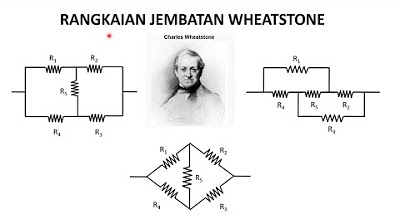Méthode des tangentes parallèles. Titrage Volume équivalent
Summary
TLDRThe video explains how to determine the equivalent volume and pH at equivalence using the parallel tangent method when titrating. It instructs to first plot two tangents parallel to each other on either side of the pH jump. To ensure the tangents are parallel, use a ruler and set square. Then draw perpendicular lines to find the midpoint of each tangent segment to plot the parallel line equidistant to both. This green line intersects the pH-metric curve at the equivalence point. Finally, read the graph to get the coordinates of the equivalence point - the equivalent volume on the x-axis and pH at equivalence on the y-axis.
Takeaways
- 😀 To determine the equivalent volume and pH at the equivalence point using the parallel tangent method, first plot two parallel tangents to the curve on either side of the pH jump.
- 👉🏻 To plot truly parallel lines, use a ruler and square to ensure they are equidistant.
- 📏 Plot perpendicular lines from the parallel tangents to mark the midpoint of each segment, then connect the midpoints to trace the parallel line equidistant to the tangents.
- 🔃 This green line intersects the pH-metric curve tracing at the equivalence point.
- 📊 Read the graph coordinates of the intersection point to find the equivalent volume on the X-axis and pH at equivalence on the Y-axis.
- ✏️ Practice this parallel tangent technique to master it!
- 🧪 The script outlines how to determine key titration information from a pH-metric curve tracing using parallel tangents.
- 🔬 Tangents are plotted on either side of the pH jump, then connected by a parallel line that marks the equivalence point.
- 📐 Proper tools like rulers and squares help plot accurate, parallel tangent lines.
- 🎓 Mastering this graphical analysis technique is important for titration experiments.
Q & A
What is the purpose of plotting two parallel tangents on either side of the pH jump in a titration curve?
-Plotting parallel tangents allows you to locate the equivalence point on the titration curve. The line equidistant between the tangents intersects the curve at the equivalence point.
How can you ensure that two tangents plotted on a titration curve are properly parallel?
-Use a ruler and protractor to carefully plot tangents that are parallel. Draw perpendicular lines to the tangents and find the midpoint of each perpendicular segment to plot the equidistant line.
What values can be determined from the equivalence point located using parallel tangents?
-The equivalence point allows determination of the equivalent volume on the x-axis and the pH at equivalence on the y-axis.
Why is there a pH jump at the equivalence point in a titration curve?
-The pH jumps because the equivalence point is where the stoichiometric ratio between acid and base is exactly reached, causing a sharp change in pH.
What reagents are typically used in an acid-base titration?
-A strong acid or base as the titrant, and a weak acid or base as the analyte. This creates the greatest pH change at the equivalence point.
What is the best way to accurately plot tangents on a hand-drawn titration curve?
-Use a straight edge ruler and protractor to carefully mark parallel lines. Plot perpendiculars and find midpoints to add the equidistant line.
Why is it better to choose tangents just before or after the pH jump?
-The curve is steepest right before and after the jump, making it easier to plot accurate parallel tangents.
What are some potential sources of error when using the parallel tangent method?
-Possible errors include inaccurate pH measurements, plotting errors when drawing tangents, and determining volumes by eye from the graph.
How can the parallel tangent method be applied to other types of titration curves?
-The method can be used on titration curves monitoring parameters besides pH, such as electrical conductivity. The same principles apply.
What is the main advantage of locating equivalence points using parallel tangents?
-It provides a graphical interpretation to easily visualize the stoichiometric point and determine key parameters like pH and volume.
Outlines

This section is available to paid users only. Please upgrade to access this part.
Upgrade NowMindmap

This section is available to paid users only. Please upgrade to access this part.
Upgrade NowKeywords

This section is available to paid users only. Please upgrade to access this part.
Upgrade NowHighlights

This section is available to paid users only. Please upgrade to access this part.
Upgrade NowTranscripts

This section is available to paid users only. Please upgrade to access this part.
Upgrade Now5.0 / 5 (0 votes)





